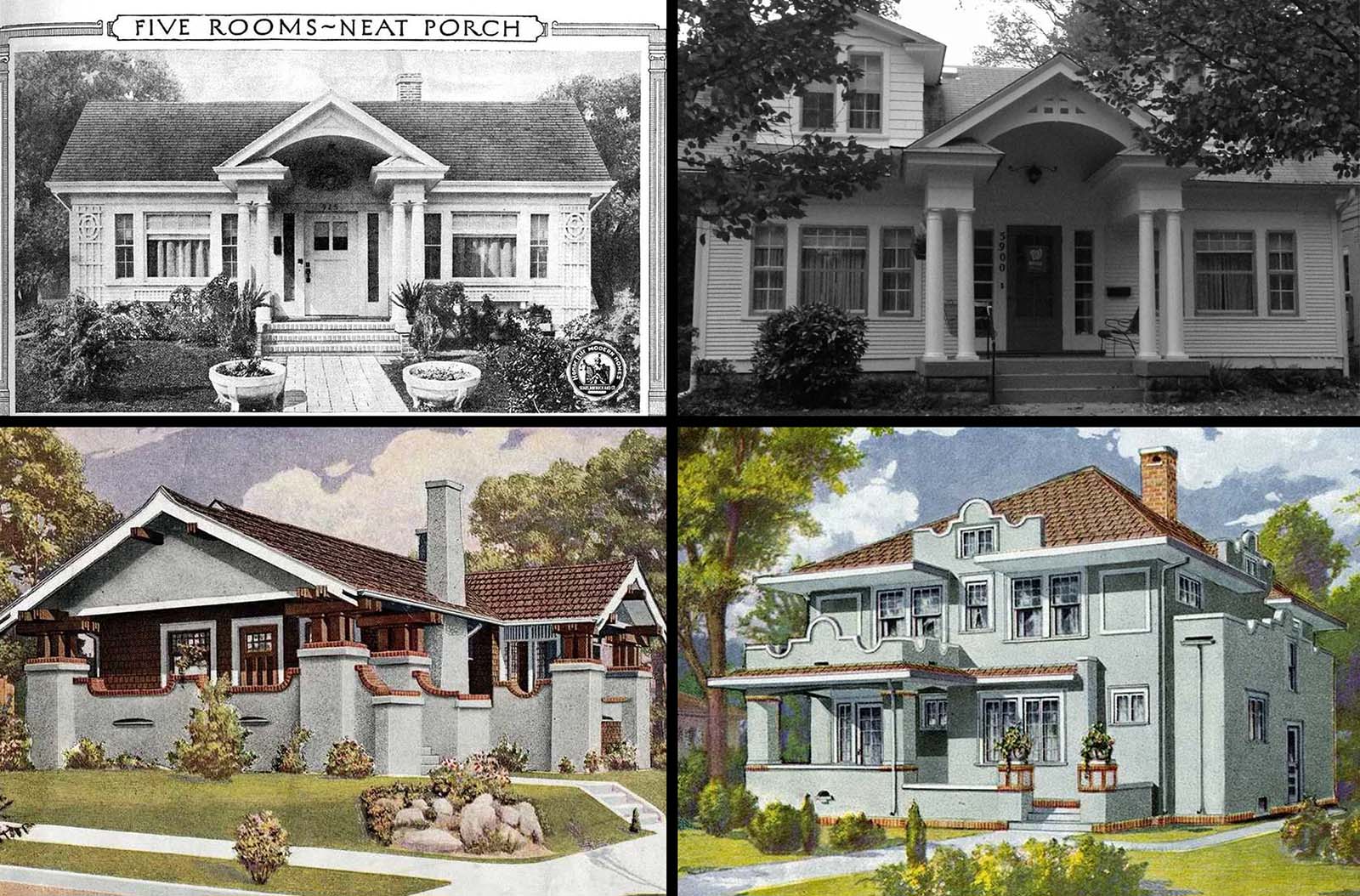 In the early 20th century, companies such as Sears, Roebuck and Co., sold tens of thousands of mail-order kit houses.
In the early 20th century, companies such as Sears, Roebuck and Co., sold tens of thousands of mail-order kit houses.
Available in a variety of styles and at a range of price points, these DIY kit houses would arrive via railroad boxcar as precut and then the buyer would have them assembled.
From 1908 to 1942, Sears sold more than 70,000 of these houses in North America, by the company’s count. Sears Modern Homes were purchased primarily by customers in East Coast and Midwest states, but have been located as far south as Florida, as far west as California, and as far north as Alaska and Canada.
Sears Modern Homes offered more than 370 designs in a wide range of architectural styles and sizes over the line’s 34-year history.
Many included the latest technology available to house buyers in the early part of the twentieth century, such as central heating, indoor plumbing, and electricity.
 Primarily shipped via railroad boxcars, these kits included most of the materials needed to build a house. Once delivered, many of these houses were assembled by the new homeowner, relatives, friends and neighbors, in a fashion similar to the traditional barn-raisings of farming families.
Primarily shipped via railroad boxcars, these kits included most of the materials needed to build a house. Once delivered, many of these houses were assembled by the new homeowner, relatives, friends and neighbors, in a fashion similar to the traditional barn-raisings of farming families.
Other homeowners relied on local carpenters or contractors to assemble the houses. In some cases, Sears provided construction services to assemble the homes.
Some builders and companies purchased houses directly from Sears to build as model homes, speculative homes, or homes for customers or employees.
Sears discontinued its Modern Homes catalog after 1940, though sales through local sales offices continued into 1942. Years later, the sales records related to home sales were destroyed during a corporate house cleaning.
As only a small percentage of these homes were documented when built, finding these houses today often requires detailed research to properly identify them.
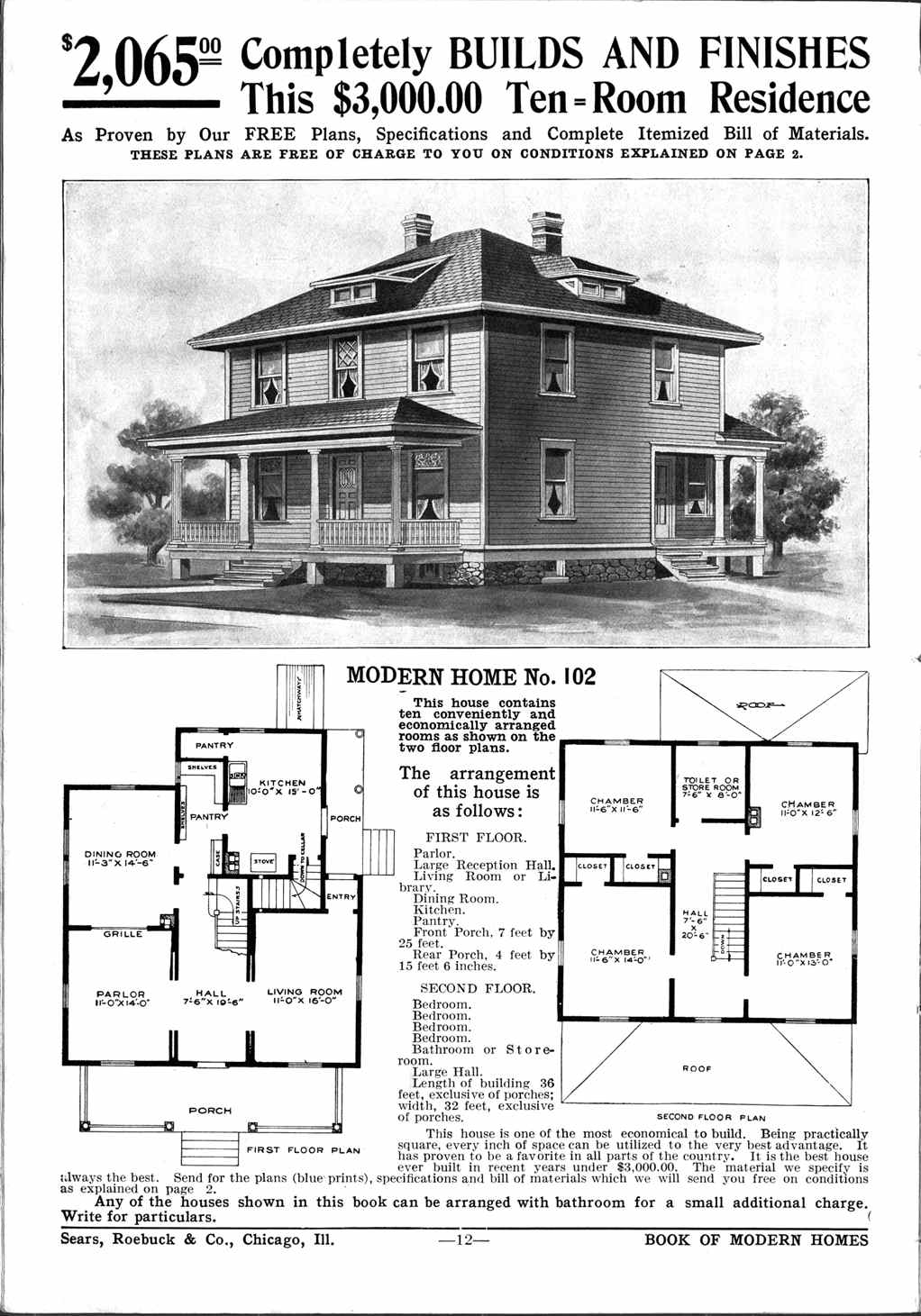 In 1906, Frank W. Kushel, a Sears manager, was given responsibility for the catalog company’s unwieldy, unprofitable building-materials department. Sales were down, and there was excess inventory languishing in warehouses.
In 1906, Frank W. Kushel, a Sears manager, was given responsibility for the catalog company’s unwieldy, unprofitable building-materials department. Sales were down, and there was excess inventory languishing in warehouses.
Kushel is credited with suggesting to Richard Sears that the company assemble kits of all the parts needed and sell entire houses through mail order. That year, the Aladdin Company of Bay City, Michigan, offered the first kit homes through mail order.
In 1908, Sears issued its first specialty catalog for houses, Book of Modern Homes and Building Plans, featuring 44 house styles ranging in price from US $360–$2,890.
The first mail order for a Sears house was filled that year. As its mail-order catalogs were already sent to millions of homes, Sears had a distinct advantage over other kit-home competitors.
As sales grew, Sears expanded its production, shipping, and sales offices to locations across the U.S. To provide the materials needed for the Modern Homes division, Sears operated a lumber mill in Cairo, Illinois.
Later, Sears constructed a second mill in Port Newark, New Jersey and purchased the Norwood Sash and Door Company in Norwood, Ohio.
The ability to mass-produce the materials used in Sears homes reduced manufacturing costs, which allowed Sears to pass along the savings in lower prices for customers.
 Precut framing timbers, an innovation pioneered by Aladdin, were first offered by Sears in 1916. Precut lumber was cut to the appropriate lengths and angles based on where the framing timber would be used in the house.
Precut framing timbers, an innovation pioneered by Aladdin, were first offered by Sears in 1916. Precut lumber was cut to the appropriate lengths and angles based on where the framing timber would be used in the house.
Before 1916, the home builder had to cut their Sears-supplied lumber to appropriate lengths. These pre-1916 houses are generally considered “catalog houses”, not “kit houses”. Pre-cut lumber reduced construction time by up to 40%, according to Sears.
 Shipped by railroad boxcar, and then usually trucked to a home site, the average Sears Modern Home kit had about 25 tons of materials, with more than 30,000 parts.
Shipped by railroad boxcar, and then usually trucked to a home site, the average Sears Modern Home kit had about 25 tons of materials, with more than 30,000 parts.
Plumbing, electrical fixtures, and heating systems were options that could be ordered at additional cost; they were many families’ first steps to modern HVAC systems, kitchens, and bathrooms.
During the Modern Homes program, large quantities of asphalt shingles became available. Asphalt shingles were cheap to manufacture and ship, and easy and inexpensive to install.
Sears also offered a plasterboard product similar to modern drywall as an alternative to the plaster and lath wall-building techniques which required skilled carpenters and plasterers.
This product offered the advantages of low price, ease of installation, and added fire protection. Local building requirements sometimes dictated that certain elements of the house construction be done professionally and varied depending on where the house was constructed.
 Sears began offering financing plans around 1912. Early mortgage loans were typically for 5 to 15 years at 6% to 7% interest. Sales peaked in 1929, just before the Great Depression.
Sears began offering financing plans around 1912. Early mortgage loans were typically for 5 to 15 years at 6% to 7% interest. Sales peaked in 1929, just before the Great Depression.
While financing through Sears helped many homeowners purchase homes, many of those purchasers defaulted during the ensuing Great Depression. The company was forced to liquidate $11 million in defaulted debt.
The mortgage program was also a PR disaster, as many of the families Sears foreclosed upon refused to do further business with the company.
By 1934, Sears had stopped offering mortgages. It even halted sales of houses themselves for a short time before restarting sales. Sales slowly recovered as the United States emerged from the Great Depression.
 The last Sears Modern Homes catalog was issued in 1940. Although it is sometimes claimed that no Sears kit homes were built after 1940, Sears continued to offer pre-cut kit homes through 1941 and into early 1942.
The last Sears Modern Homes catalog was issued in 1940. Although it is sometimes claimed that no Sears kit homes were built after 1940, Sears continued to offer pre-cut kit homes through 1941 and into early 1942.
Advertisements for Sears Modern Homes appeared through May 1942. Many of these post 1940 homes were based on models from the 1940 and earlier Sears catalogs but not all were, leading to debate over whether these homes qualify as “Sears Modern Homes”.
Because these homes were constructed using pre-cut lumber and plans provided by Sears, these homes can be considered to be “Sears Modern Homes”.
Many of these homes were built in Sears planned “Home Club Plan” developments in New Jersey, New York, Ohio and Pennsylvania.





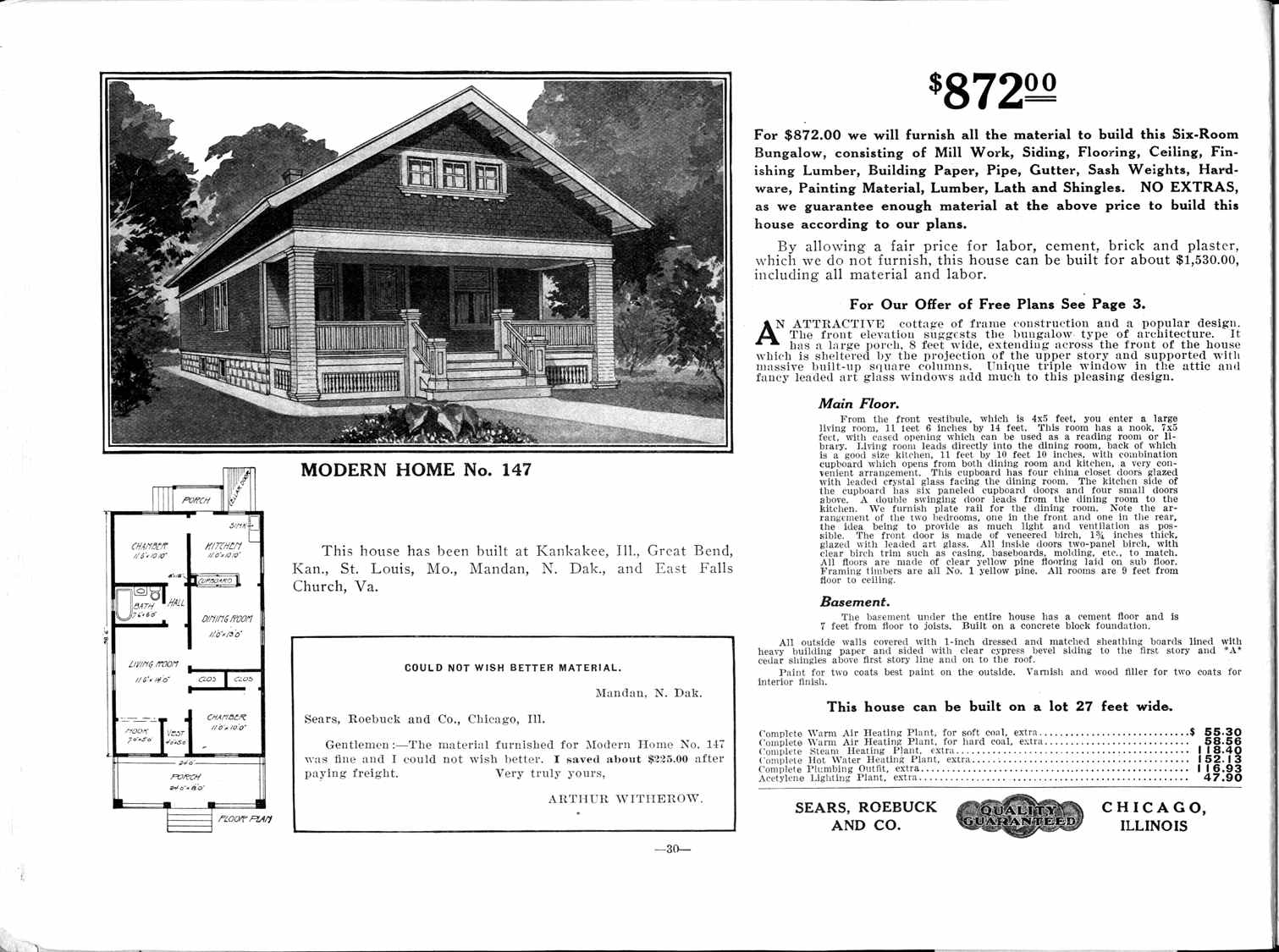








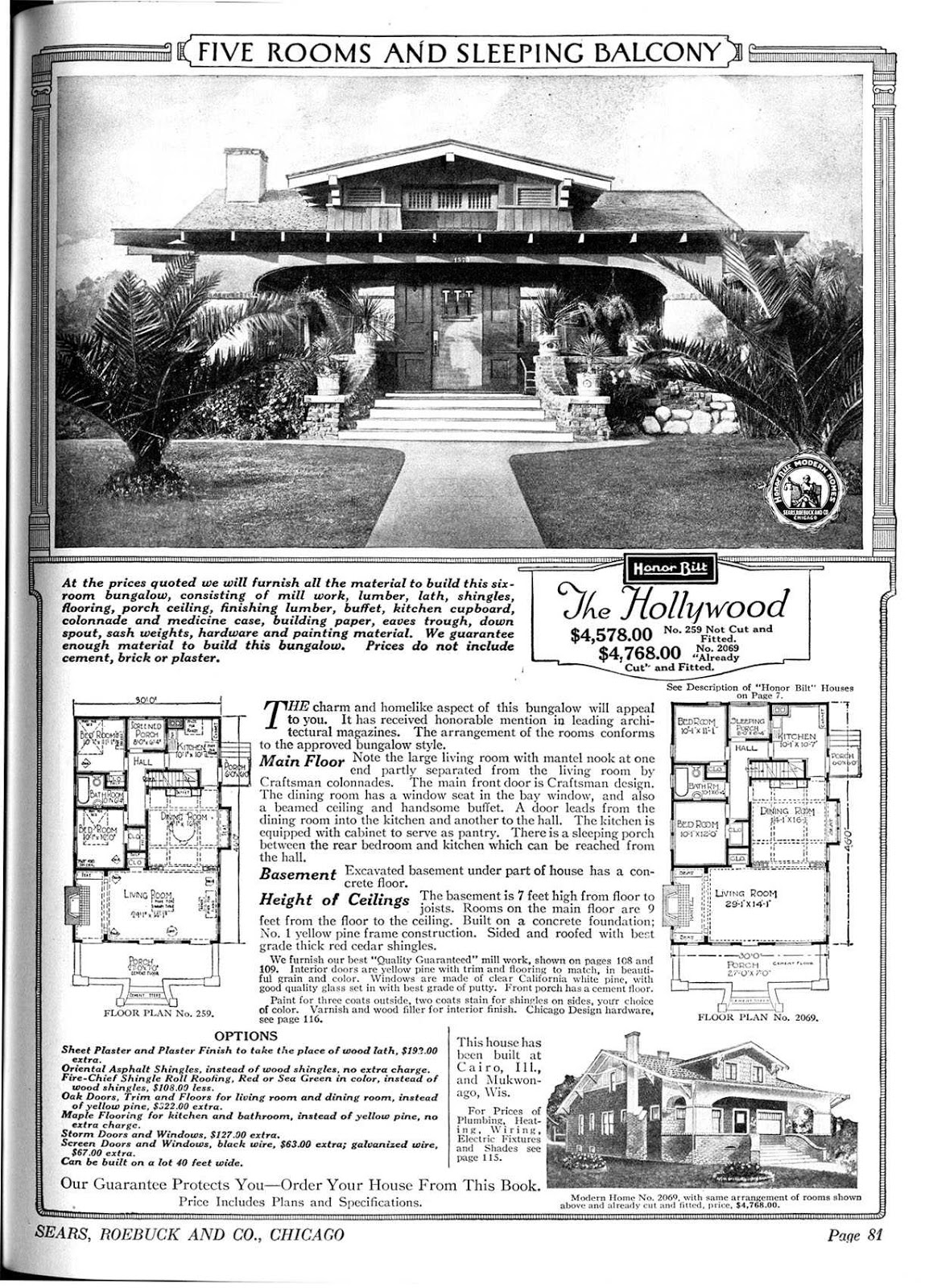












Cover of 1922 Sears Modern Homes catalog.

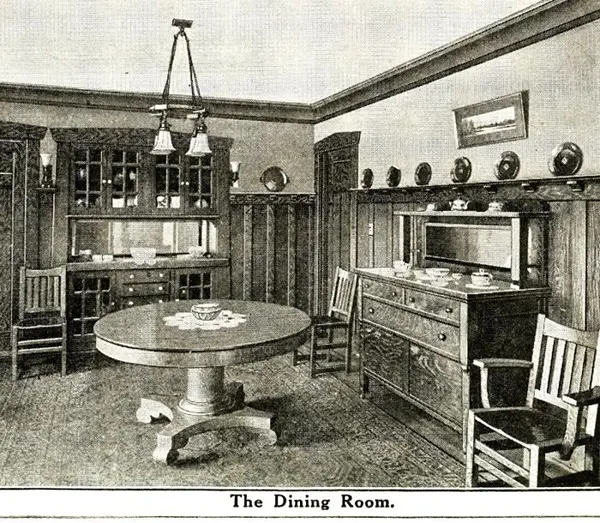
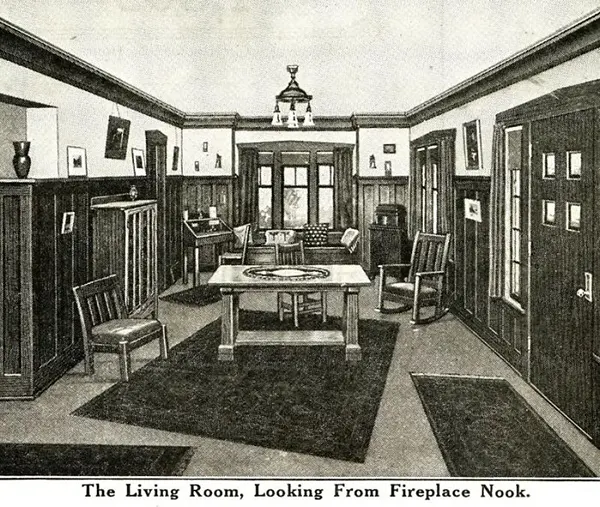
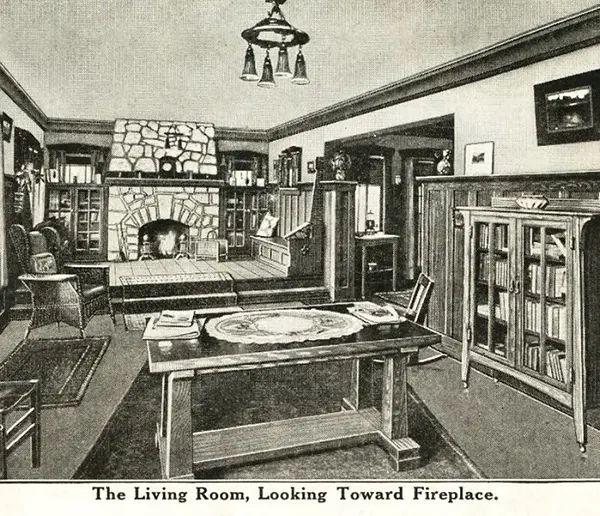

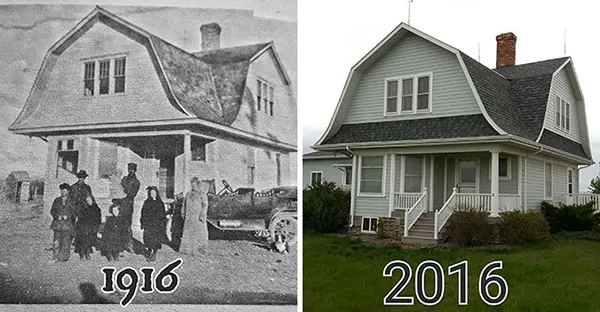

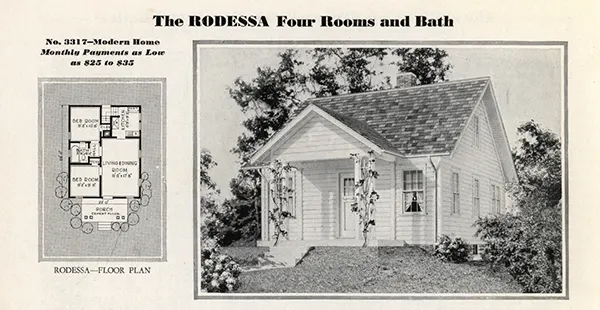


How to identify Sears homes
Identifying Sears Homes has become a pastime among history enthusiasts because of their sturdy structure, the do-it-yourself nature of construction, and the popular architectural design concepts.
However, many houses described as Sears Homes are not true Sears Homes, being either the product of another kit home manufacturer or not a kit home at all.
National and regional competitors in the catalog and kit home market included Aladdin, Bennett, Gordon-Van Tine, Harris Brothers, Lewis, Pacific Ready Cut Homes, Sterling and Montgomery Ward (Wardway) Homes.
Sears houses can be identified or authenticated using the following methods.
Sears Modern Homes were sold between 1908 and 1942. There is some debate about whether some homes from Sears that were built in 1941 and 1942 qualify as Sears Modern Homes.
Some of these homes were based on models offered in the Sears Modern Homes catalog. Others were not but were still pre-cut kit homes built from plans and materials from Sears.
Original paperwork for the house including blueprints and letters of correspondence from Sears.
Public records: From 1911 to 1933, Sears offered home mortgages and Sears company officials or the Sears, Roebuck corporation may be named on the mortgage or deed associated with the property where the home was constructed.
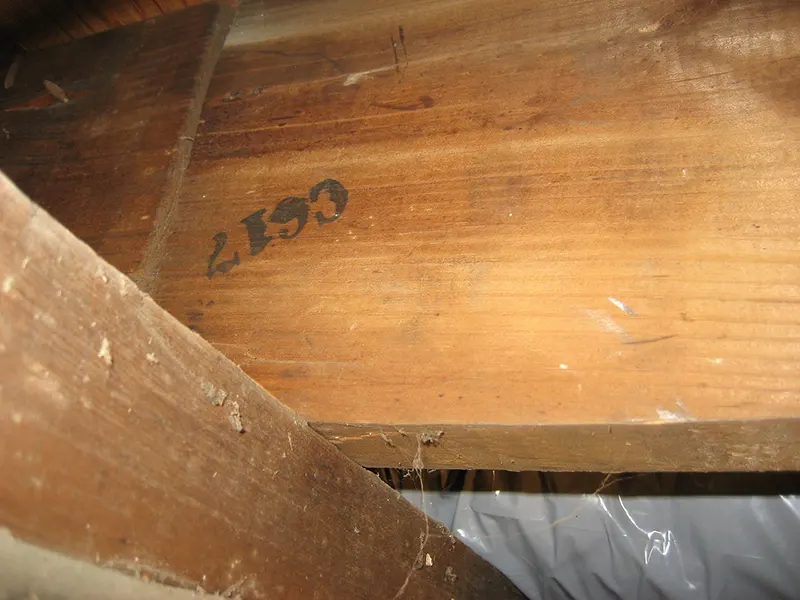
Stamped lumber in a Sears house.
Shipping labels: Often found on the back of millwork like baseboard molding or door and window trim, shipping labels associated with Sears may indicate that the home is a Sears Modern house.
Most of the millwork was fulfilled by the Sears-owned “Norwood Sash and Door Company” of Cincinnati, Ohio. However, building materials like millwork could be purchased separately from Sears so millwork with shipping labels is not, by itself, a definitive indicator of a Sears Modern house.
Stamped lumber: Most easily found in unfinished spaces like a basement or attic, framing members were stamped with a letter and a number.
These stamps are normally located on or near the ends of pieces of framing timber. However, these stamps were not used on lumber shipped before 1916, when Sears first started offering pre-cut lumber.

Shipping Label from a Sears house.
Compare house designs to original catalog images. Some models of Sears homes were very similar in design to models offered by other kit home manufacturers or through plan books. Designs may have been modified but generally should match in layout and dimensions.
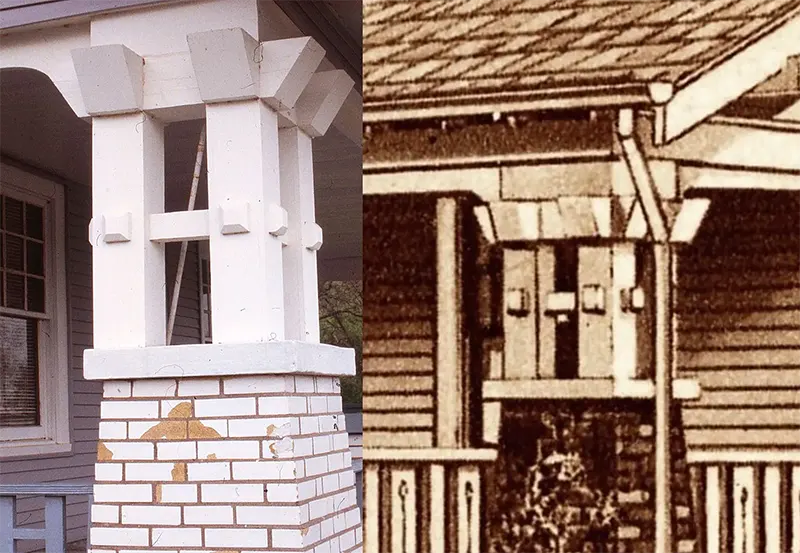
Column detail from a Sears Vallonia house, pictured alongside its appearance in the catalog.
Sears Modern Homes built in the 1930s may have a small circled “SR” cast into the bathtub in the lower corner (furthest from the tub spout and near the floor) and on the underside of the kitchen or bathroom sink.
Additionally, Goodwall sheet plaster was an early drywall-like product offered by Sears and may be an indication of a Sears Modern Home.
(Photo credit: Sears Catalogs and Archives / Wikimedia Commons / Pinterest / Flicker / Britannica).


No comments
Post a Comment